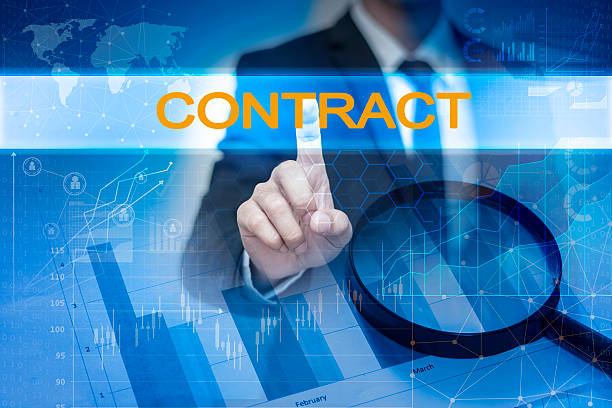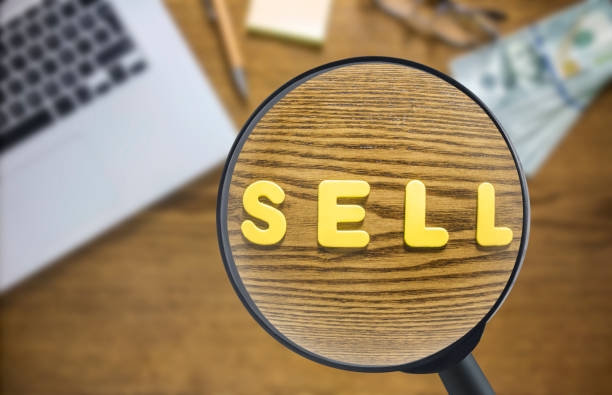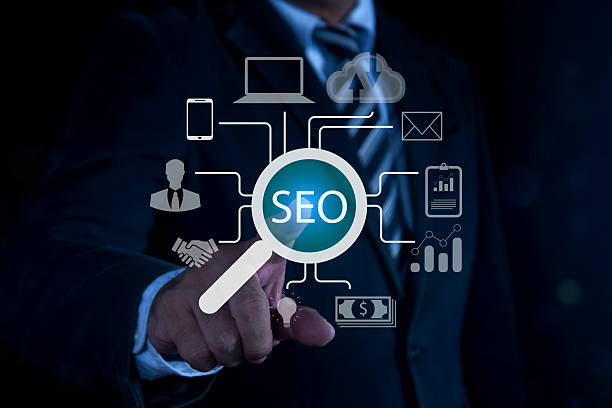What is On-Page SEO and Why is it Important?

On-page SEO, also known as on-site SEO, is a set of actions you take within your website to improve its ranking in search engine results.
These actions include optimizing your content, site structure, and HTML.
On-page SEO is extremely important because it helps search engines understand the topic and relevance of your content.
By optimizing your on-page SEO, you can increase your website’s visibility and attract more organic traffic.
Simply put, on-page SEO helps you make your website more attractive to search engines.
Search engines like Google use complex algorithms to determine website rankings.
These algorithms consider various factors, including content quality, its relevance to searched keywords, and user experience.
By implementing effective on-page SEO, you can show search engines that your website is a valuable and relevant resource for users.
One important aspect of on-page SEO is the correct use of keywords.
Effective on-page SEO helps a site achieve a better ranking.
This means you should use keywords relevant to your topic in your titles, meta descriptions, and main body text.
However, it’s crucial to avoid overusing keywords, as this can harm user experience and even lead to penalties from search engines.
The main goal of on-page SEO is to improve user experience.
When your website is well-organized, its content is relevant and valuable, and its navigation is easy, users spend more time on your site, and their likelihood of returning in the future increases.
This positive user behavior signals to search engines that your website is a valuable resource and should be ranked higher.
Ultimately, on-page SEO is a long-term investment.
By dedicating time and effort to optimizing your website, you can attract sustainable and growing organic traffic.
This traffic is not only free but also typically of higher quality, as users who come to your site through search are looking for specific information and are more likely to convert into customers.
Therefore, on-page SEO should be an integral part of your online marketing strategy.
To better understand on-page SEO, we need to consider its various components.
Are you tired of losing business opportunities due to not having a professional corporate website?
Rasaweb helps you by designing a professional corporate website:
✅ Build a powerful and reliable image for your brand
✅ Convert website visitors into loyal customers
⚡ Get a free consultation now!
Keyword Research for On-Page SEO

Keyword research is the cornerstone of any successful on-page SEO strategy.
Before taking any action in on-page SEO, you need to know what words your target audience enters into search engines.
For this, you can use various keyword research tools such as Google Keyword Planner, Ahrefs, SEMrush, and Moz Keyword Explorer.
These tools help you identify keywords related to your topic, examine their search volume, and assess the level of competition for them.
Choosing the right keywords is key to success in on-page SEO.
Your keywords should be relevant to your site’s topic, have a reasonable search volume, and not have overly fierce competition.
In other words, you should choose keywords that have a chance of ranking.
After identifying keywords, you should strategically use them in your content.
This means you should incorporate your keywords into your titles, meta descriptions, URLs, and the main body of your content.
However, it’s important to avoid keyword stuffing, as this can harm user experience and even lead to penalties from search engines.
The best approach is to naturally and smoothly integrate your keywords into your content.
Also, note that long-tail keywords can be very valuable.
These keywords usually have lower search volume, but competition for them is also lower, and the likelihood of converting visitors into customers is higher.
For example, instead of using the keyword “shoes,” you can use “buy original men’s athletic shoes.”
Keyword research is an ongoing process.
You should regularly review your keywords and update them as needed.
You should also look for new and relevant keywords that you may not have considered before.
By conducting keyword research regularly, you can ensure that your content is always relevant and appealing to your target audience.
On-page SEO with relevant keywords helps you attract target customers.
Choosing the right keywords is key to success in on-page SEO.
Optimize your on-page SEO to improve your site’s ranking.
Use SEO tools to find suitable keywords.
Content Optimization for On-Page SEO

Content optimization is one of the most important aspects of on-page SEO.
Your content should be appealing to both search engines and users.
In other words, your content should be both technically optimized and qualitatively valuable.
To optimize content, you need to pay attention to several points.
Firstly, your content must be unique and original.
Avoid copying content from other websites, as this can harm your ranking.
Secondly, your content should be relevant to your keywords.
Use your keywords in titles, meta descriptions, URLs, and the main body of your content, but avoid overusing them.
Thirdly, your content should be readable and understandable.
Use short, simple sentences, keep your paragraphs brief, and use images and videos to make your content more engaging.
Fourthly, your content must be valuable and useful.
Provide accurate and relevant information that answers user questions and solves their problems.
Fifthly, your content must be up-to-date.
Ensure your content is always accurate and relevant and update it as needed.
Furthermore, you should also pay attention to your content’s structure.
Use headings and subheadings to organize your content and divide it into smaller, more digestible sections.
This helps users easily find the information they are looking for and helps search engines better understand your content’s topic.
Also, use internal and external links to connect your content with other web pages.
Internal links help search engines understand your site’s structure, and external links help users gain more information on their desired topic.
Ultimately, remember that your main goal should be to create content that is valuable to users.
If your content is useful to users, they will spend more time on your site, their likelihood of returning in the future increases, and they are more likely to share it with others.
This positive user behavior signals to search engines that your website is a valuable resource and should be ranked higher.
On-page SEO with valuable content helps you attract and retain your audience.
Produce high-quality content to achieve a better ranking in search results.
Strengthen your on-page SEO with engaging content.
On-page SEO requires producing high-quality and valuable content.
| Factor | Description |
|---|---|
| Content Freshness | Ensure your content is up-to-date and accurate. |
| User Value | Provide useful information that solves user problems. |
Optimizing Titles and Meta Descriptions

Titles and meta descriptions are the first things users see in search results.
These elements play a crucial role in attracting clicks and increasing your website’s traffic.
Your page title should accurately describe the page’s topic and include your main keywords.
The title length should be between 50 and 60 characters to be fully displayed in search results.
An attractive and relevant title can significantly increase your site’s click-through rate.
The meta description is a brief summary of your page’s content that appears below the title in search results.
Meta descriptions should be engaging and convincing, encouraging users to click on your link.
The meta description length should be between 150 and 160 characters.
Meta descriptions should accurately describe the page’s topic and highlight the benefits of visiting your page for users.
Improve your click-through rate with appealing titles and meta descriptions for on-page SEO.
Optimizing titles and meta descriptions is an excellent opportunity to introduce your website to users and search engines.
By using relevant keywords, providing accurate and engaging information, and encouraging users to click, you can increase your website’s organic traffic.
Also, remember that titles and meta descriptions should be unique for each page of your website.
Avoid using duplicate titles and meta descriptions, as this can harm your ranking.
To create attractive titles and meta descriptions, you can use various tools such as Yoast SEO and Rank Math.
These tools help you optimize your titles and meta descriptions and ensure best practices are followed.
Using these tools, you can optimize your title and meta description for on-page SEO.
Furthermore, remember that titles and meta descriptions should be continuously reviewed and updated.
By evaluating the performance of your titles and meta descriptions, you can identify their weaknesses and optimize them to improve their performance.
By optimizing titles and meta descriptions, you can help search engines better understand your page’s topic.
This can help improve your ranking in search results.
Ultimately, remember that your main goal should be to create titles and meta descriptions that are appealing and useful to users.
If users click on your link and find your content valuable, they are more likely to spend more time on your site, their likelihood of returning in the future increases, and they are more likely to share it with others.
By following these tips, you can optimize your title and meta description and benefit from on-page SEO.
On-page SEO can help attract more visitors to your website.
Don’t have a corporate website yet and missing out on online opportunities? With professional corporate website design by Rasaweb,
✅ Double your business credibility
✅ Attract new customers
⚡ Free consultation for your corporate website!
Optimizing URLs
![]()
URLs are your website’s addresses displayed in browsers.
URLs play an important role in on-page SEO because they help search engines and users understand your page’s topic.
URLs should be short, descriptive, and relevant to your keywords.
Avoid using long, complex URLs containing special characters.
An optimized URL can help improve your ranking in search results.
URLs should be logically organized and reflect your site’s structure.
For example, if you have a page about “men’s athletic shoes,” its URL should be something like: example.com/mens-athletic-shoes.
It’s best to use your main keywords in URLs, but avoid overusing them.
URLs should be readable and understandable, encouraging users to click on your link.
Also, remember that URLs should be unique for each page of your website.
Avoid using duplicate URLs, as this can harm your ranking.
To create optimized URLs, you can use hyphens (-) to separate words.
Avoid using underscores (_), as search engines may interpret them as a single word.
Also, it’s better to use lowercase letters in URLs, as some servers may be case-sensitive.
Furthermore, you should also pay attention to your URL structure.
Your URL structure should be logical and hierarchical, helping users easily navigate your site.
For example, if you have an online store, your URLs might look something like: example.com/category/product.
By following these tips, you can optimize your URLs for on-page SEO and benefit from them.
Optimized URLs can help improve user experience and help search engines better understand your site’s structure.
Ultimately, remember that your main goal should be to create URLs that are appealing and useful to users.
If users click on your link and find your content valuable, they are more likely to spend more time on your site, their likelihood of returning in the future increases, and they are more likely to share it with others.
Improve your site structure with optimized URLs for on-page SEO.
Optimizing Images for On-Page SEO

Images are an important part of any website.
Images can make your content more engaging and understandable and help improve user experience.
However, images can also impact your on-page SEO.
To optimize images for on-page SEO, you need to pay attention to several points.
Firstly, optimize your image file names.
Use descriptive file names relevant to your keywords.
For example, instead of “IMG_1234.jpg,” use “red-running-shoes.jpg.”
Secondly, use alt tags for your images.
An alt tag is text that is displayed instead of the image if it fails to load.
The alt tag should accurately describe the image and include your main keywords.
Thirdly, reduce your image file sizes.
Large images can slow down your page loading speed and harm user experience.
Use image compression tools to reduce your image file sizes without compromising quality.
Fourthly, use the appropriate format for your images.
JPEG format is suitable for colorful images, and PNG format is suitable for images with simple graphics.
Fifthly, optimize your images to be mobile-friendly.
Ensure your images display correctly on mobile devices and do not reduce your page loading speed.
Improve user experience with optimized images for on-page SEO.
Furthermore, you can use your images to create internal links.
By placing links to other pages of your website within images, you can help search engines better understand your site’s structure and help users easily navigate your site.
Ultimately, remember that your main goal should be to create images that are appealing and useful to users.
If users find your images valuable, they are more likely to spend more time on your site, their likelihood of returning in the future increases, and they are more likely to share them with others.
By following these tips, you can optimize your images for on-page SEO and benefit from them.
On-page SEO attracts audiences through high-quality images.
Increase your site’s loading speed by optimizing images.
Internal Linking for On-Page SEO

Internal linking is the process of creating links between different pages of your website.
Internal linking plays an important role in on-page SEO because it helps search engines understand your site’s structure and helps users easily navigate your site.
Internal linking can help improve your ranking in search results and lead to an increase in your website’s traffic.
To create effective internal links, you need to pay attention to several points.
Firstly, create links to relevant pages.
Links should direct to pages that are related to the current page’s topic and provide more information about that topic.
Secondly, use appropriate anchor text.
Anchor text is the text that users click on to be directed to another page.
The anchor text should be descriptive and relevant to the destination page and include your main keywords.
Thirdly, place links naturally within the text.
Links should not be placed artificially and abruptly in the text.
Links should be naturally integrated into the text and contribute to its readability.
Fourthly, create links to more important pages on your site.
Pages that are more important to you and that you want to rank better in search results should receive more links from other pages on your site.
Fifthly, limit the number of links on each page.
The number of links on each page should not be too high, as this can harm user experience and signal to search engines that your site is spam.
Improve site structure with internal linking for on-page SEO.
Furthermore, you can use internal linking to create a hierarchical structure on your site.
By linking from main pages to sub-pages and from sub-pages to more detailed pages, you can help search engines better understand your site’s structure and help users easily access the information they are looking for.
Ultimately, remember that your main goal should be to create links that are useful to users.
If users find your links valuable, they are more likely to click on them and spend more time on your site.
By following these tips, you can optimize your internal links for on-page SEO and benefit from them.
On-page SEO with strong internal links helps search engines better identify your site’s pages.
Internal links should be strategically placed on the site.
Website Speed Optimization

Website speed is one of the most important ranking factors in search engines.
Users who visit your site expect your pages to load quickly.
If your pages load slowly, users may leave your site and visit other sites.
This can harm your ranking in search results.
To optimize website speed, you need to pay attention to several points.
Firstly, use powerful hosting.
Your hosting should be able to manage your site’s high traffic well and ensure your page loading speed.
Secondly, use a CDN (Content Delivery Network).
A CDN is a network of servers located worldwide that store your site’s content on the server closest to the user.
This can significantly increase your page loading speed.
Thirdly, optimize your images.
Large images can reduce your page loading speed.
Use image compression tools to reduce your image file sizes without compromising quality.
Fourthly, use a caching plugin.
A caching plugin stores your site’s pages in the user’s browser cache.
This makes your site’s pages load quickly on subsequent user visits.
Fifthly, optimize your site’s code.
Your site’s code should be clean and organized, avoiding extra and unnecessary code.
Improve user experience with high-speed on-page SEO.
Furthermore, you can use various tools such as Google PageSpeed Insights and GTmetrix to check your site’s speed.
These tools help you identify your site’s weaknesses and provide solutions to improve its speed.
By following these tips, you can optimize your site’s speed for on-page SEO and benefit from it.
On-page SEO requires a site with high loading speed.
Reduce bounce rate by optimizing site speed.
Website speed optimization is an important factor in on-page SEO.
On-page SEO and website speed have a direct relationship with each other.
| Tool | Description |
|---|---|
| Google PageSpeed Insights | Analyzes site speed and provides improvement solutions |
| GTmetrix | Checks site speed with detailed insights |
Worried that your company’s old website is driving away new customers? Rasaweb solves this problem with modern and efficient corporate website design.
✅ Increases your brand’s credibility.
✅ Helps attract targeted customers.
⚡ Contact Rasaweb for a free consultation!
Responsive Optimization for On-Page SEO

Website responsiveness means that your site should display correctly on all devices, including desktops, tablets, and mobile phones.
Today, most users access the internet via mobile phones.
Therefore, your site’s responsiveness is very important for on-page SEO.
If your site is not responsive, users may leave your site and visit other sites.
This can harm your ranking in search results.
To optimize for responsiveness, you need to pay attention to several points.
Firstly, use a responsive theme.
Your site’s theme should automatically adapt to the user’s device screen size.
Secondly, optimize your images for mobile.
Your images should display correctly on mobile devices and not reduce your page loading speed.
Thirdly, optimize your fonts for mobile.
Your fonts should be legible and easy to read on mobile devices.
Fourthly, optimize your site’s menu for mobile.
Your site’s menu should be easy to use on mobile devices and help users easily navigate your site.
Fifthly, optimize your buttons and links for mobile.
Your buttons and links should be large enough on mobile devices for users to easily click on them.
Improve user experience with responsive design for on-page SEO.
Furthermore, you can use various tools such as Google Mobile-Friendly Test to check your site’s responsiveness.
This tool helps you identify your site’s responsiveness issues and provides solutions to fix them.
By following these tips, you can optimize your site for on-page SEO and benefit from it.
On-page SEO requires responsive design.
Increase your mobile traffic with responsive design.
Responsive design is an important factor in on-page SEO.
On-page SEO and responsive design have a direct relationship with each other.
Monitoring and Analyzing On-Page SEO

After implementing on-page SEO actions, you should continuously monitor your site’s performance and analyze your on-page SEO results.
This helps you understand which actions have been effective and which need improvement.
For monitoring and analyzing on-page SEO, you can use various tools such as Google Analytics and Google Search Console.
Google Analytics helps you review your site’s traffic, analyze user behavior on your site, and measure your conversion rate.
Google Search Console helps you examine your site’s performance in search results, identify the keywords users use to enter your site, and fix your site’s technical issues.
By using these tools, you can gain valuable insights into your site’s on-page SEO and make better decisions for its improvement.
For example, you can check which pages of your site receive the most traffic, which keywords drive the most traffic to your site, and which pages of your site have a high bounce rate.
By analyzing this information, you can identify pages that need improvement and take actions to optimize them.
Also, you can check which keywords your site ranks for and strive to improve your ranking for more important keywords.
Ensure continuous improvement with ongoing monitoring for on-page SEO.
Ultimately, remember that on-page SEO is an ongoing process.
You should continuously optimize your site and monitor its performance to achieve better results in search results.
By following the tips mentioned in this article, you can optimize your site’s on-page SEO and attract more organic traffic.
On-page SEO is a long-term investment.
On-page SEO can help improve user experience.
Improve your site’s performance by monitoring and analyzing on-page SEO.
Frequently Asked Questions
| Question | Answer |
|---|---|
| What is a Meta Title and why is it important in on-page SEO? | The meta title is the most important on-page SEO element displayed at the top of the browser tab and in search results. This title helps search engines and users understand the main topic of the page and should include the primary keyword. |
| What role does the Meta Description play in on-page SEO? | The meta description is a short summary of the page’s content displayed below the title in search results. Although it doesn’t directly affect ranking, its attractiveness can increase the click-through rate (CTR). |
| How should keywords be used in page content? | Keywords should be used naturally and relevantly in strategic locations such as the title, headings, first paragraph, and body text. Avoid excessive keyword stuffing. |
| What is the importance of high-quality and comprehensive content in on-page SEO? | High-quality, unique, informative, and comprehensive content that addresses user needs is of great importance. Search engines give higher rankings to content that provides real value. |
| What is the application of heading tags (H1-H6) in on-page SEO structure? | Heading tags (H1, H2, H3, etc.) are used to structure content and indicate the importance of different sections. H1 is the main title of the page, and each page should only have one H1. Other tags are used for subheadings. |
| How to optimize images to improve on-page SEO? | To optimize images, use descriptive alt text that includes relevant keywords, reduce the image file size without compromising quality, and use meaningful and relevant file names. |
| What are the characteristics of a friendly URL for on-page SEO? | A friendly URL should be short, readable, descriptive, include primary keywords, and be free of extra characters. The URL structure should be hierarchical and logical to be understandable for both users and search engines. |
| How does internal linking help on-page SEO? | Internal linking, by connecting related pages, helps users and search engine crawlers better understand the site structure, transfers page authority, and increases user time on the site. |
| What is the impact of page loading speed on on-page SEO? | High loading speed is crucial for both user experience and SEO ranking. Slower pages may be overlooked by search engines and lead to an increase in bounce rate. |
| Why is mobile-friendliness very important in on-page SEO? | Given the increasing number of searches via mobile devices, having a responsive and mobile-friendly site is essential for user experience and ranking in search results (Google’s mobile-first indexing). |
And other services of Rasaweb Advertising Agency in the field of advertising
- Smart Conversion Rate Optimization: Designed for businesses seeking online growth through the use of real data.
- Smart Digital Advertising: A novel service for increasing customer acquisition through the use of real data.
- Smart Website Development: A professional solution for user interaction focusing on an SEO-driven content strategy.
- Smart Brand Identity: Designed for businesses looking to improve SEO ranking through the use of real data.
- Smart Advertorial: An effective tool for increasing click-through rates with the help of intelligent data analysis.
And over hundreds of other services in the field of internet advertising, advertising consultation, and organizational solutions
Internet Advertising | Advertising Strategy | Advertorial
Resources
On-page SEO Training on AparatKey On-Page SEO Tips for Analytical ContentIran SEO On-Page SEO ArticlesWeb Start SEO Content Strategy
? For your business to leap forward in the digital world, Rasaweb Afarin is with you. By providing innovative solutions in digital marketing, we help your brand grow and gain visibility. For more information about personal website design and our other services, contact our experts today.
📍 Tehran, Mirdamad Street, next to Central Bank, Southern Kazeroun Alley, Ramin Alley, No. 6

